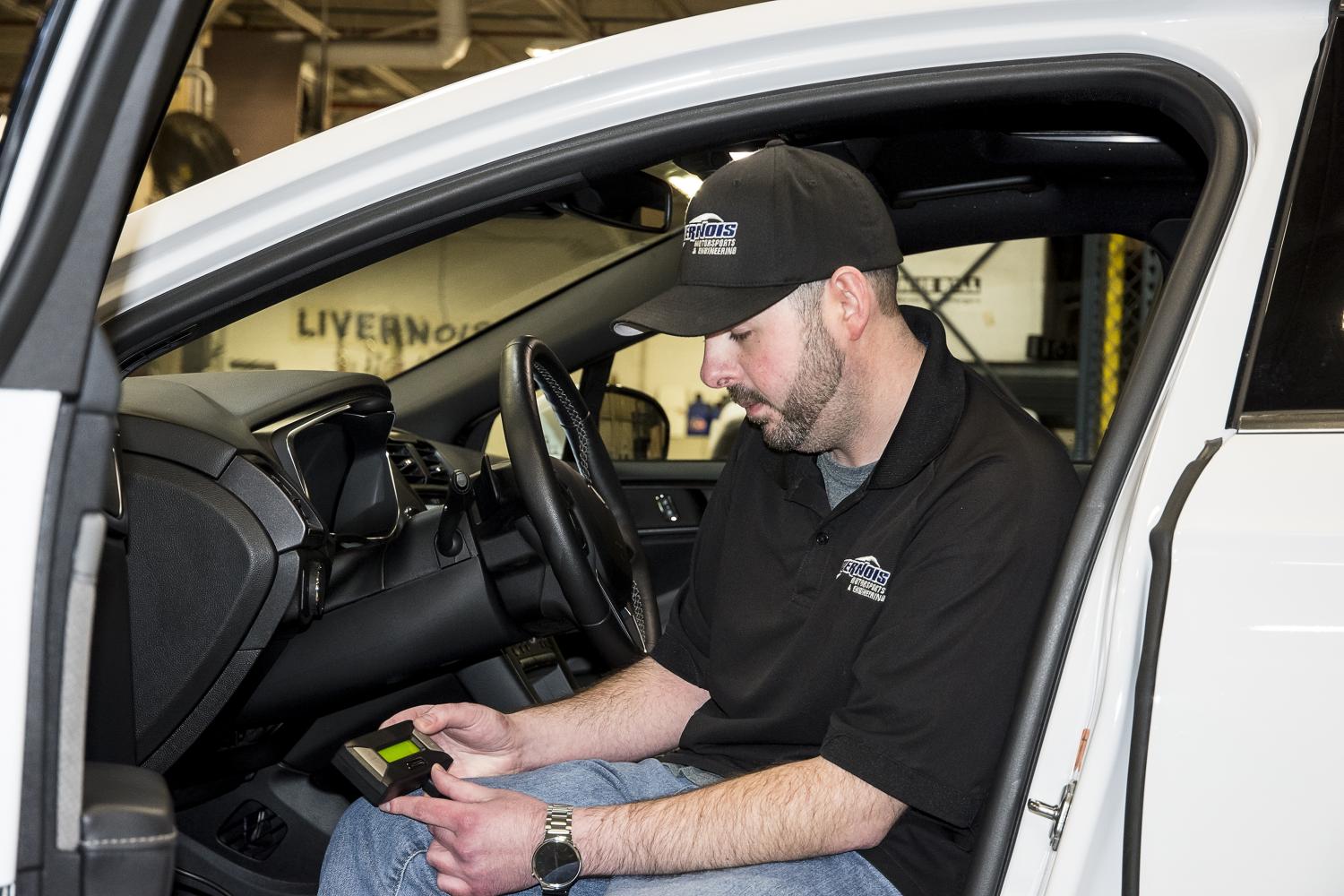
Can I Really “Update” My Car?
We “update” everything from our computers to our mobile phones. Most often these updates are a nuisance with few visible rewards. What if I were to explain to you how you could “update” that Ford F150 sitting in your garage (or any of dozens of other vehicles) and that the result would be immediate, astounding, and satisfying in both performance and drivability?
The car enthusiast community has known the benefits of modifying a few well-chosen codes in their engine’s Electronic Control Unit (ECU) for many years. This practice is becoming more mainstream now as companies like Livernois Motorsports and Engineering (LME) www.livernoismotorsports.com, operating in the shadows of Ford Motor Company’s HQ in Dearborn, Michigan, are making these performance enhancements easy and trouble-free for the average consumer. While well-known for their extensive array of high-performance engine parts and engine builds, LME is best-known for their MyCalibrator tuner. Going back to that F150 in the garage, this device will enhance its performance, towing ability, and fuel efficiency.

I will explain briefly what the MyCalibrator is and how it is installed in your vehicle but before I do that I’d like to talk a little bit about how the new ECU code is developed. Factory tunes (what comes with your car from the manufacturer) are tuned to the lowest parameters of performance leaving great room for improvement which tuners are all too happy to exploit. LME has four dynamometers (dynos) and these dynos measure the torque, or power, coming out of the engine and into the rear wheels. The development car is put on the dyno with each tire fitting on to a roller. The engine power then turns the tires in roller. The rollers provide resistance, similar to that required to power the vehicle on the highway. A simple gauge on the dyno indicating horsepower shows the operator just how much horsepower the engine is producing. The person tuning the engine with new code then carefully tweaks the code to enhance transmission shift points (less gear “hunting”, boost to the turbocharger (if the engine has any), advances to the ignition timing, and a dozen other variables at the disposal to the operator within the ECU in order to increase horsepower and improve drivability.
The end result is an engine which runs more efficiently (better mileage) and performs better (quicker and smoother). LME’s tuner costs US$599.99 plus shipping.
Anthony Mahaney, one of LME’s sales representatives and tech supporters, greeted me at the door in early November and gave me a tour of the facility. Because there are so many projects being done by LME for OEM auto manufacturers a “no photos” policy is a must in the shop. Suffice it to say, I did see the four dynos, many engines and customer vehicles with extraordinary power! I was taken aback when one 750 horsepower Camaro barked to life and cackled and popped through the shop. Serious kit!
 It took Anthony about five minutes to teach me how to download the code into my car after purchase of the calibrator. He put four “tunes” (one each for factory original, 87 enhanced, 91, 93 octane ratings) and instructed me on how to download updates from the cloud in the future. He went on to say that once purchased I could use this same tuner for a small fee on future Ford purchases (but it would only be “married” to one vehicle at a time).
It took Anthony about five minutes to teach me how to download the code into my car after purchase of the calibrator. He put four “tunes” (one each for factory original, 87 enhanced, 91, 93 octane ratings) and instructed me on how to download updates from the cloud in the future. He went on to say that once purchased I could use this same tuner for a small fee on future Ford purchases (but it would only be “married” to one vehicle at a time).
The 2.7 liter twin-turbo engine in my car is the same as the middle engine option currently being offered in the Ford F150. While it’s the smallest in terms of displacement for the F150, it’s the largest engine for the new Fusion. The difference between the car I drove into the shop and the one I drove out was immediate and amazing! This happening with all of five minutes time inserting the new code into the OBDII (the diagnostic port). The shifts were sharper and much more satisfying, it held onto gears longer, and the car leapt forward compared to what it did before entering the shop. This is Ford’s performance version of the Fusion and is no slouch to begin with.
A surprising development to me was that the car is a little quieter. On the expressway I was amazed at how quietly speed sneaks up on me, very Audi-like (think A6 with the 3 liter turbo). This is all very confidence building in terms of merging and passing. I have to believe that it will be able to handle the loads expected on a truck with much greater aplomb.
The 2017 Fusion Sport is the second vehicle I have “tuned” the first being a 2014 VW Jetta GLI. In that case, I used APR LLC www.goapr.com , an automotive engineering firm out of Opelika, Alabama. While LME specializes in domestic vehicles APR specializes in European. Again, the results made the Jetta a much more satisfying car to drive.
Certain caveats need to be addressed before the conversation is complete: These tunes may not meet certain manufacturer’s warranty agreements. This is why tuners like APR and LME are very careful not to “stress” the engines to the point of fatiguing the parts. There is a whole stratum of tuners out there who will be more than happy to sell you code which will make your engine into a lion – but a lion which may only last a month or two. Be sure to do your research online before purchasing from any tuner, being sure not to get lost in the hype of the boy-racers out there.
In closing, I’d like to say that tuning your vehicle could be a serious consideration if you’re the kind of person who likes the latest updates and has US$599.99. Sales indicate that there are more of you out there than any one of you might imagine.









